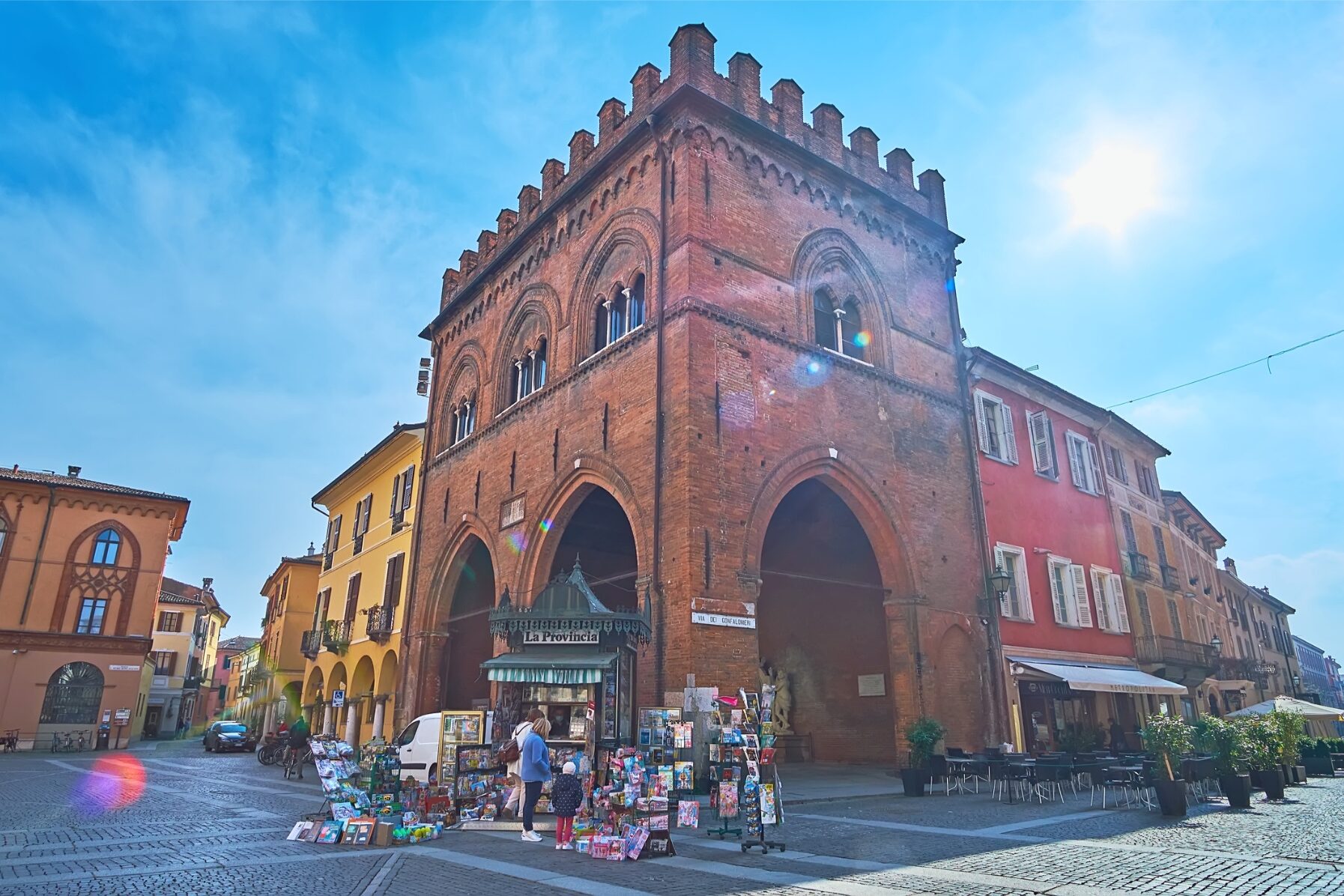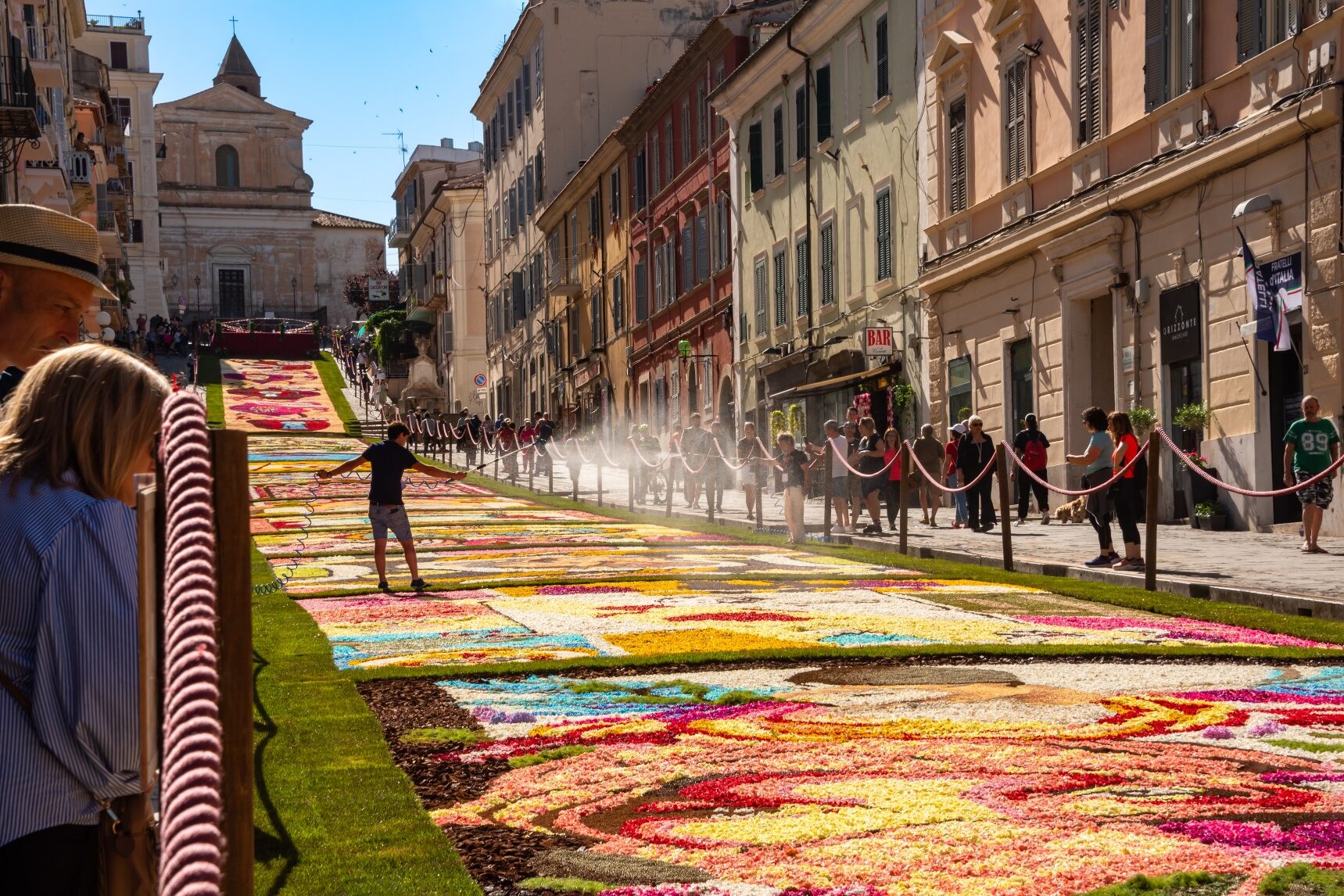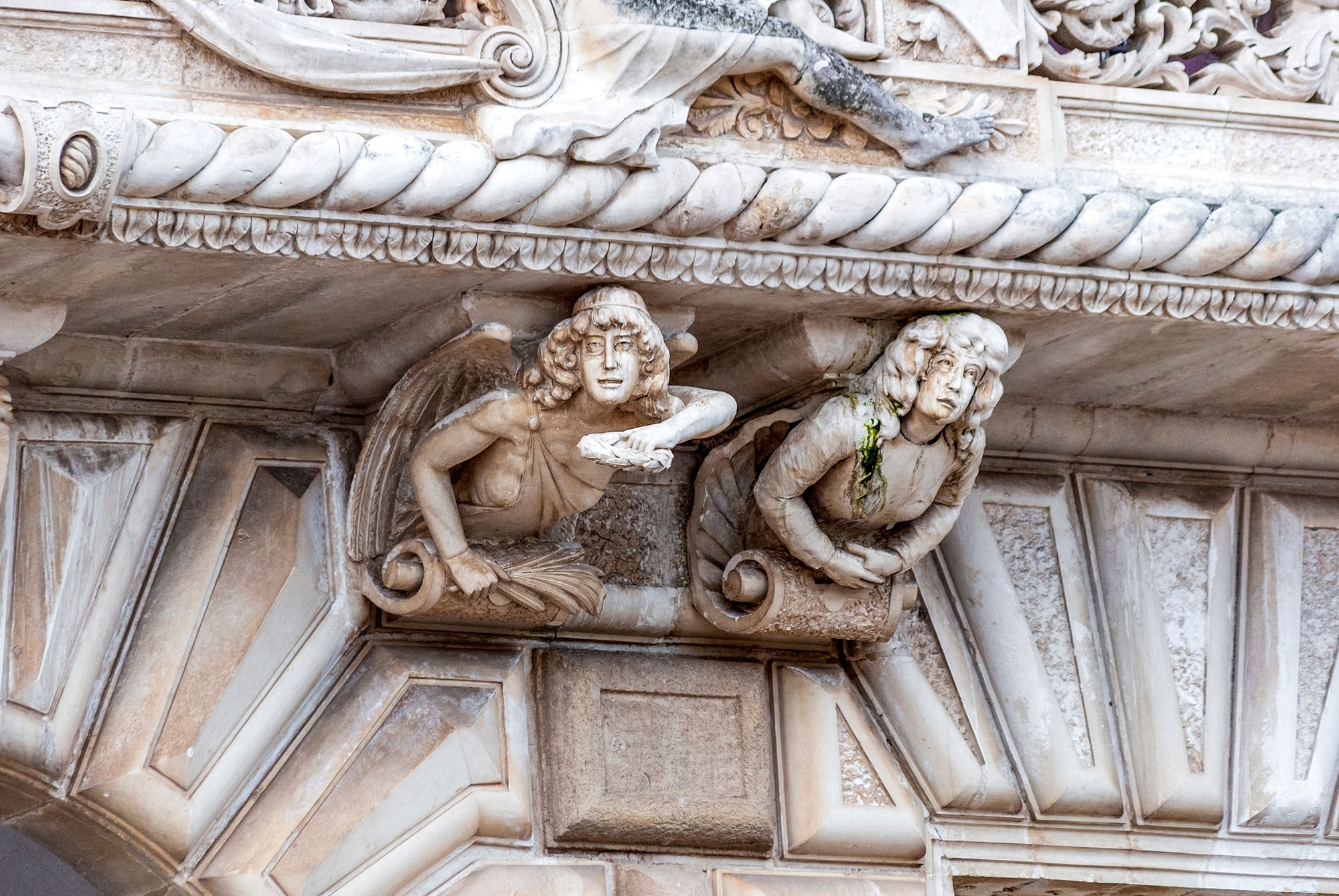A debate on whether a man in a suit generates appeal might last a minute or two. The same debate on a man in an Italian suit would be over before I finished typing this sentence. Given the fact that Italy is known for its superior products, both hedonistic and cultural, is it surprising that the world’s sexiest suit is also Italian? Suave, sophisticated, worthy of a second — or third — glance; a man wearing an Italian suit can’t help but get the attention his choice of clothing demands.
But I digress — my first-hand observations in Italy might afford a biased point of view, but certainly one that is shared by many!
Delving into the mysteries of the Italian men’s suit in comparison to other models, such as British and American, helps understand the combined elements that result in the appeal of an Italian suit. And as with any topic, viewing a slice of history always helps prepare the path to understanding.

An example of the elegance of Italian menswear (© Dreamstime)
One must look across the waters to merry old England to trace the origin of the modern men’s suit. There, a charmer by the name of Beau Brummell single-handedly changed the course of men’s fashion. Somewhat like a social media influencer of today to the fashionistas of London, Brummell’s popularity and following in the early 1800’s set in motion a radical new take on menswear. At Brummell’s behest, fancy silk stockings, powdering wigs, and frilly coats of the day fell out of favor – rules were cast aside and fashion reinvented. Over-the-top fop gave way to “dandyism:” close-cut tailored jackets, long trousers paired with boots, and natural, unadorned hair. Brummel daringly went so far as to advocate daily bathing over powders and perfumes to keep one smelling acceptable…shocking at the time!
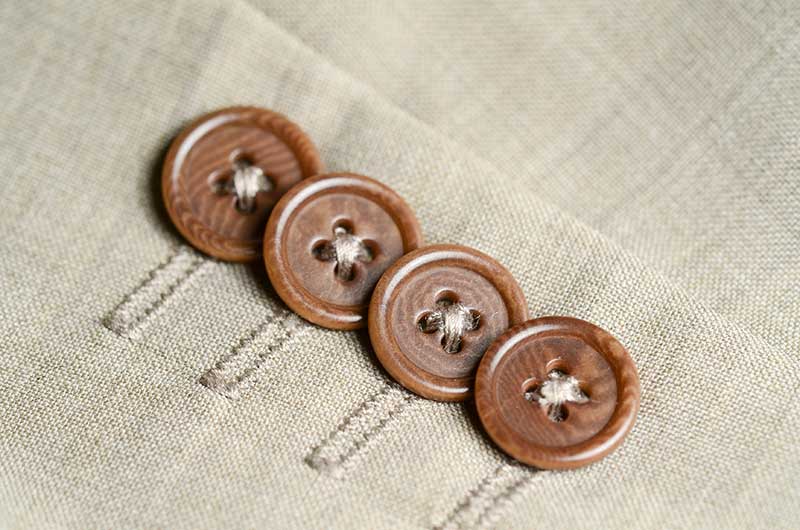
Attention to detail is one characteristic of Italian men fashion (© Dreamstime)
Erstwhile in mid 1800’s Italy, the first bespoke (individualized custom clothing) Italian tailor shop opened its doors on the granite shoals of Sardinia. The Castangia brand took a chance on this British fad and began custom making Brummell-style men’s suits, adding his own Italian flair, of course. The gamble paid off: Castangia 1850 remains one of Italy’s most prestigious menswear labels today and is found in high end markets worldwide.
The 1930’s ushered in a new era for Italian suit design. Never before had the “proper English suit” been so radically challenged and altered. Names such as Canali and Vincenzo Attolini led the way, furthering a distinct and unique Italian stylization that became known as Neapolitan — a more relaxed, body friendly fit — that was rapidly embraced by prestigious men of the time.
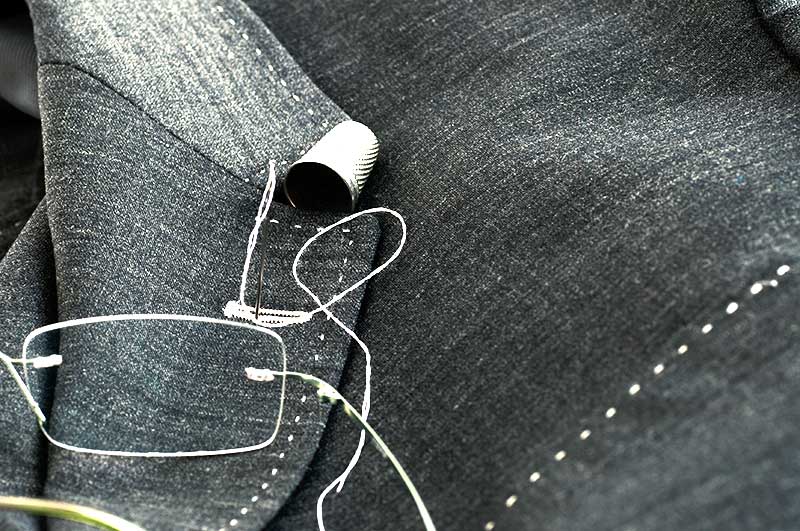
Handmade Italian suits are a status symbol (© Dreamstime)
Fast forward to 1945 Italy. The war was over – Italy was struggling to rebuild, the economy was shattered, and Federico Fellini’s neo-realism gave face to this new reality. Yet optimism prevailed. On Rome’s Via Barberini, master tailor Nazareno Fonticolo and entrepreneur Gaetano Savini partnered to open an unassuming men’s boutique specializing in bespoke luxury menswear: they called it Brioni. Extraordinary attention to detail, superior fabric quality, and innovative colors marked the beginnings of what would become known as the Roman style suit and a brand name still equated with the finest in menswear.
By 1952, Brioni was the embodiment of men’s haute couture for northern Italian elite. Empowered, Fonticolo made the decision to showcase his creations on a style show catwalk – something unheard of at the time for men’s fashion. Held at Sala Bianca within the walls of Florence’s Palazzo Pitti – the epicenter of Italian couture style shows — Brioni suits were officially introduced to the international fashion world. The Brioni brand gained instant celebrity status: lo stile Italiano had gone viral.

Silk ties, a colorful and trendy accessory of Italian menswear(© Dreamstime)
The seduction of Italian men’s suits quickly advanced across the Atlantic. Public appearances by John Wayne, Clark Gable, and other head-turning stars sporting a Brioni suit added to the allure. Remember the cutting figure of Marcello in La Dolce Vita? Brioni is to thank for at least the clothing part of that!
Of course, the Brioni brand was not a stand-alone in the burgeoning market of Italian bella figura. Rising from the fashion districts of Naples was Kiton. Founded in 1956 by 5th generation fabric merchant Ciro Paone, the brand set its sights on “one upping” the suit game. Only the finest of fabrics were acceptable, every garment hand-stitched, continuity of piecing created the illusion of a fluid ensemble: as Paone summed it, “a garment that knows you just as well as you know yourself.” Paone’s obsessive work habits – “half-love, half-madness” – resulted in the embodiment of what remains today as the classic Neapolitan style suit. Starting at $8,500 USD, they also remain a classic status symbol!

Italian elegance for men: a mix of tradition and innovation (© Dreamstime)
While the mid-century designer greats influence on esteemed menswear endures, it would be inexcusable neglect not to pay homage to a more contemporary name homologous to suits – Giorgio Armani. Original plans for a career in medicine never materialized; Armani felt an irresistible draw towards fashion design. Almost 20 years of experience later, he debuted his personal label in July 1975. His innovative ideas – a ready-to-wear line, massive ad campaigns, a vast array of branded products – quickly established the Armani name as synonymous with high fashion.
Armani’s trademark relaxed-fit jackets soon become iconic as the sexy replacement for the “power suit.” Remember Richard Gere in American Gigolo? Or how about Crockett and Tubbs in Miami Vice, DiCaprio in Wolf of Wall Street? Point made.
Fine fabrics, hand stitchery, minute attention to detail, and intangible Italian glamour can make a fine suit, but there must be sound building blocks on which to apply these elements.
Imagine, if you will, a Venn Diagram: the three large overlapping circles each contain one of the three distinct styles of Italian suit design – Romano, Napoletano and Milanese. Within that inner circle created by the overlapping large circles we find these shared traits: an unstructured shoulder, high gorge lines on the lapel, a slender contoured fit, flapless pockets, high buttons, no break at the pant cuff, no rear vent – the bones of the Italian suit that took the fashion world by storm in 1952.
Perhaps the words of Kiton founder Ciro Paone say it best for every creative mind, hand, and soul that toil passionately together, creating a masterfully crafted Italian suit: “I love beauty, I am faithful to tradition, and I take huge pride in my work.”
Un dibattito sul fatto che un uomo in abito abbia fascino potrebbe durare uno o due minuti. Lo stesso dibattito su un uomo italiano in abito finirebbe prima che io finisca di scrivere questa frase. Dato che l’Italia è nota per i suoi prodotti superiori, sia da un punto di vista edonistico che culturale, è forse sorprendente che anche l’abito più sexy del mondo sia italiano? Soave, sofisticato, degno di un secondo o terzo sguardo; un uomo che indossa un abito italiano non può fare a meno di attirare l’attenzione che la sua scelta di abbigliamento richiede.
Ma divaghiamo… le mie impressioni in Italia potrebbero essere un punto di vista parziale, ma certamente sarà condiviso da molti!
Approfondire i misteri dell’abito maschile italiano rispetto ad altri modelli, come quello britannico e quello americano, aiuta a comprendere la combinazione di elementi che danno vita all’appeal di un abito italiano. E come per qualsiasi argomento, approfondire l’aspetto storico aiuta sempre a preparare il cammino verso la comprensione.
Si deve guardare oltreoceano per incontrare la vecchia Inghilterra e rintracciare l’origine dell’abito da uomo moderno. Lì, un seduttore di nome Beau Brummell, cambiò da solo il corso della moda maschile. Un po’ come un influencer dei social media di oggi per le modaiole di Londra, la popolarità di Brummell nei primi anni del 1800, mise in moto una nuova, radicale, visione della moda maschile. Per volere di Brummell, le fantasiose calze di seta, le parrucche incipriate e i cappotti con frange del tempo caddero in disuso – le regole furono messe da parte e la moda reinventata. Il damerino che rappresentava il meglio di, lasciò il posto al “dandismo”: giacche sartoriali dal taglio stretto, pantaloni lunghi abbinati a stivali, e capelli naturali e senza fronzoli.
Brummell si spinse audacemente fino a sostenere la necessità di fare un bagno quotidiano anzichè usare polveri e profumi per mantenere un odore accettabile….cosa scioccante per l’epoca!
A metà dell’800 in Italia, la prima sartoria italiana su misura (abbigliamento personalizzato) aprì le sue porte sui banchi di granito della Sardegna. Il marchio Castangia colse l’occasione di questa moda britannica e iniziò a realizzare abiti da uomo su misura in stile Brummell, aggiungendo ovviamente il suo stile italiano. La scommessa diede i suoi frutti: Castangia 1850 rimane oggi uno dei marchi di abbigliamento maschile più prestigiosi d’Italia e si trova nei mercati di fascia alta in tutto il mondo.
Gli anni ’30 inaugurarono una nuova era per il design degli abiti italiani. Mai prima di allora il “proper English suit” era stato così radicalmente sfidato e modificato. Nomi come Canali e Vincenzo Attolini aprirono la strada, portando avanti uno stile italiano unico e distinto che divenne noto come napoletano – vestibilità più rilassata e solidale con il corpo – che fu rapidamente abbracciata dagli uomini di prestigio dell’epoca.
Avanti veloce verso l’Italia del 1945. La guerra era finita: l’Italia faticava a ricostruirsi, l’economia era in frantumi e il neorealismo di Federico Fellini diede volto a questa nuova realtà. Eppure prevaleva l’ottimismo. In via Barberini, a Roma, il maestro sarto Nazareno Fonticolo e l’imprenditore Gaetano Savini si unirono per aprire una modesta boutique maschile specializzata in abbigliamento maschile di lusso su misura: lo chiamarono Brioni. Straordinaria attenzione ai dettagli, qualità superiore dei tessuti e colori innovativi segnarono gli inizi di quello che sarebbe diventato l’abito in stile romano e un marchio ancora oggi equiparato al meglio dell’abbigliamento maschile.
Nel 1952, Brioni fu l’incarnazione dell’haute couture maschile per l’élite del Nord Italia. Rafforzatosi, Fonticolo decise di mostrare le sue creazioni sulla passerella di una sfilata di stile – qualcosa di inedito, all’epoca, per la moda maschile. Nella Sala Bianca, all’interno delle mura di Palazzo Pitti a Firenze, oggi epicentro delle sfilate della moda italiana, gli abiti Brioni vennero ufficialmente presentati al mondo della moda internazionale. Il marchio Brioni ottenne un immediato status di celebrità: lo stile Italiano era diventato virale.
La seduzione degli abiti da uomo italiani superò rapidamente l’Atlantico. Le apparizioni pubbliche di John Wayne, Clark Gable, e altre star da far girare testa con un abito Brioni aumentarono il fascino. Ricordate il figurino di Marcello in La Dolce Vita? Bisogna ringraziare Brioni almeno per la parte dell’abbigliamento!
Naturalmente, il marchio Brioni non era un marchio a sé stante nel fiorente mercato della bella figura italiana. Dai quadrilateri della moda di Napoli nacque Kiton. Fondato nel 1956 da Ciro Paone, commerciante di tessuti di quinta generazione, il marchio puntava a fare un passo in avanti. Solo i tessuti più pregiati erano accettabili, ogni capo cucito a mano, la continuità del cucito creava l’illusione di un insieme fluido: come riassumeva Paone, “un capo che ti conosce bene quanto te stesso”. Le ossessive abitudini lavorative di Paone – “mezzo amore, mezzo pazzia” – diedero vita a quello che oggi rimane il classico abito in stile napoletano. A partire da 8.500 dollari, rimane ancora un classico status symbol!
Se l’influenza dei grandi stilisti della metà del secolo scorso resiste sulla considerazione della moda maschile italiana, sarebbe imperdonabile non omaggiare un nome più contemporaneo che è sinonimo di abiti maschili: Giorgio Armani. I progetti originari per una carriera nella medicina non materializzarono mai; Armani sentì un’attrazione irresistibile verso il fashion design. Dopo quasi 20 anni di esperienza, debuttò con la sua etichetta personale nel luglio 1975. Le sue idee innovative – linea prêt-à-porter, campagne pubblicitarie di massa, vasta gamma di prodotti di marca – affermarono rapidamente il nome Armani come sinonimo di alta moda.
Le giacche di Armani dal taglio rilassato diventarono ben presto icone, il sostituto sexy del “power suit”. Ricordate Richard Gere in American Gigolo? Oppure Crockett e Tubbs in Miami Vice, DiCaprio in Wolf of Wall Street? Un punto fermo.
Tessuti pregiati, cuciture a mano, minuziosa attenzione ai dettagli, e glamour italiano intangibile possono fare un abito di classe, ma ci devono essere solidi mattoni su cui applicare questi elementi.
Immaginate, se volete, un Diagramma di Venn: i tre grandi cerchi sovrapposti contengono ciascuno uno dei tre stili distinti del design italiano dell’abito: Romano, Napoletano e Milanese. All’interno di quel cerchio interno creato dai grandi cerchi sovrapposti troviamo questi tratti comuni: spalla non strutturata, alte linee di gola sul risvolto, vestibilità snella e sagomata, tasche senza patta, bottoni alti, nessun risvolto sul pantalone, nessun taglio posteriore – la struttura del completo italiano che ha preso d’assalto il mondo della moda nel 1952.
Forse le parole del fondatore di Kiton Ciro Paone danno meglio voce a ogni mente, mano e anima creativa che lavorano insieme con passione, creando un abito italiano magistralmente realizzato artigianalmente: “Amo la bellezza, sono fedele alla tradizione e sono molto orgoglioso del mio lavoro”.
















